The Role of Waste-to-Energy in Modern Waste Management
In today's world, where the issue of waste management has reached a critical point, innovative solutions are more important than ever. One such solution that has gained traction is waste-to-energy technology. This approach not only addresses the growing mountain of waste but also transforms it into something useful—energy. Imagine turning garbage into electricity that powers our homes and industries! It’s a fascinating concept that blends environmental stewardship with energy production, making it a key player in modern waste management systems.
The significance of waste-to-energy technologies in contemporary waste management cannot be overstated. With landfills overflowing and the environmental impact of waste disposal becoming increasingly dire, the need for sustainable alternatives is urgent. Waste-to-energy facilities convert non-recyclable waste into usable energy through various processes, including combustion, anaerobic digestion, and gasification. This not only reduces the volume of waste that ends up in landfills but also contributes to energy production, thus addressing two pressing issues simultaneously.
As we delve deeper into the mechanics of waste-to-energy systems, we discover a multitude of benefits they bring to the table. From reducing landfill usage to lowering greenhouse gas emissions, these technologies pave the way for a more sustainable and circular economy. By harnessing waste as a resource, we can significantly decrease our reliance on fossil fuels, all while generating clean energy. It's like finding a hidden treasure in a pile of trash—who knew that our waste could hold such potential?
However, the journey towards widespread adoption of waste-to-energy technologies is not without its challenges. Public perception often plays a significant role in the success of these projects. Many communities harbor misconceptions about the safety and environmental impact of waste-to-energy facilities, which can lead to opposition against their establishment. Educating the public and engaging them in discussions about the benefits of these technologies is crucial for fostering acceptance and support.
Additionally, regulatory hurdles and technological limitations can pose significant barriers. A supportive regulatory framework is essential for encouraging investment and innovation in the waste-to-energy sector. Policymakers must recognize the potential of these technologies and work to create an environment conducive to their growth.
Looking ahead, the future of waste-to-energy technology appears promising. With advancements in technology and an increasing focus on sustainable waste management practices, we can expect to see more innovative solutions emerging in this field. As we strive to tackle the global waste crisis, waste-to-energy systems will undoubtedly play a vital role in shaping a cleaner, more sustainable future for generations to come.
- What is waste-to-energy technology? Waste-to-energy technology involves converting non-recyclable waste materials into usable energy, such as electricity, heat, or fuel.
- How does waste-to-energy benefit the environment? It reduces landfill usage, lowers greenhouse gas emissions, and helps recover valuable materials, contributing to a circular economy.
- Are there any challenges in implementing waste-to-energy projects? Yes, challenges include public opposition, regulatory hurdles, and technological limitations that can hinder development.
- What is the future outlook for waste-to-energy technologies? The future looks bright with advancements in technology and a growing emphasis on sustainable waste management practices.

Understanding Waste-to-Energy Technology
At its core, waste-to-energy (WtE) technology is a remarkable approach that transforms non-recyclable waste materials into usable energy. Imagine taking what we usually deem as trash and turning it into something valuable, like electricity or heat! This innovative process not only helps manage waste but also contributes to energy production, creating a win-win scenario for both the environment and society.
The WtE process typically involves several key stages, including collection, processing, and conversion. First, waste is collected from various sources, including households, businesses, and industries. Once gathered, the waste undergoes a sorting process where recyclable materials are separated. What’s left is primarily organic waste and non-recyclables that can be processed further. This leads us to the next stage, where the waste is subjected to thermal treatment methods, such as incineration or gasification, to convert it into energy.
During the thermal conversion, waste is heated to high temperatures, resulting in the release of gases that can be captured and utilized to produce electricity or heat. For instance, in an incineration facility, waste is burned in a controlled environment, producing steam that drives turbines to generate electricity. Alternatively, gasification involves converting organic materials into synthetic gas, which can also be transformed into electricity or used as a fuel source.
One of the most fascinating aspects of WtE technology is its ability to recover valuable materials during the processing phase. After the waste is incinerated, what remains is called bottom ash, which can be further processed to extract metals and other materials that can be recycled. This not only conserves resources but also promotes a circular economy, where waste is minimized, and materials are reused.
To give you a clearer picture, here’s a simplified overview of the waste-to-energy process:
| Stage | Description |
|---|---|
| Collection | Gathering waste from various sources, including residential and commercial areas. |
| Sorting | Separating recyclable materials from non-recyclables. |
| Thermal Treatment | Heating waste to produce energy, either through incineration or gasification. |
| Energy Generation | Producing electricity or heat from the energy released during the thermal treatment. |
| Resource Recovery | Extracting valuable materials from the remaining ash for recycling. |
In summary, waste-to-energy technology not only addresses the pressing issue of waste management but also harnesses the potential of waste as a resource. By converting waste into energy, we can significantly reduce the amount of waste sent to landfills while generating clean energy, thus paving the way for a more sustainable future.

Benefits of Waste-to-Energy
The technologies are numerous and multifaceted, making them a vital component of modern waste management systems. As we navigate through an era where waste generation is at an all-time high, these technologies offer innovative solutions to reduce landfill usage while simultaneously generating energy. Imagine transforming trash into treasure; that's precisely what waste-to-energy does! By converting waste materials into usable forms of energy like electricity, heat, or even fuel, this process not only helps in managing waste but also contributes to energy production, thus addressing two critical issues at once.
One of the most compelling advantages of waste-to-energy systems is their ability to significantly reduce landfill usage. Traditional waste management methods often lead to overflowing landfills, which are not only unsightly but also harmful to the environment. By diverting waste from landfills, waste-to-energy facilities can help minimize the land area required for waste disposal. In fact, studies suggest that these facilities can reduce the volume of waste sent to landfills by up to 90%! This is a game-changer for urban areas struggling with limited space for waste disposal.
Moreover, waste-to-energy technologies contribute to a more sustainable waste management approach by producing renewable energy. In a world grappling with energy shortages and the effects of climate change, harnessing energy from waste can be a significant step towards energy independence. By generating energy locally, communities can reduce their reliance on fossil fuels, leading to lower greenhouse gas emissions. This not only helps combat climate change but also promotes a cleaner environment. The table below summarizes the key benefits of waste-to-energy:
| Benefit | Description |
|---|---|
| Reduced Landfill Usage | Diverts waste from landfills, reducing the need for landfill space. |
| Energy Production | Generates renewable energy from waste materials, contributing to energy independence. |
| Lower Greenhouse Gas Emissions | Reduces emissions associated with waste disposal and fossil fuel consumption. |
| Job Creation | Creates jobs in the construction and operation of waste-to-energy facilities. |
Another significant aspect of waste-to-energy is its positive impact on the environment. By processing waste instead of sending it to landfills, these technologies help in mitigating pollution. They can convert organic waste into energy while capturing harmful emissions that would otherwise contribute to air and soil pollution. This means cleaner air and a healthier environment for everyone. Additionally, waste-to-energy facilities are often equipped with advanced emission control systems, ensuring that they operate within strict environmental regulations.
Furthermore, waste-to-energy processes promote resource recovery. During the conversion process, valuable materials can be extracted from waste, which can then be recycled or repurposed. This not only conserves natural resources but also supports the concept of a circular economy, where waste is viewed as a resource rather than a burden. By recovering materials, we reduce the need for virgin resources, thus minimizing the environmental impact associated with resource extraction.
In summary, the benefits of waste-to-energy technologies extend beyond just managing waste. They provide a pathway to a more sustainable future by reducing landfill usage, producing renewable energy, lowering greenhouse gas emissions, and promoting resource recovery. As communities continue to grapple with the challenges of waste management, embracing waste-to-energy solutions could be the key to unlocking a cleaner, greener future.
- What is waste-to-energy technology? Waste-to-energy technology refers to processes that convert waste materials into usable forms of energy, such as electricity, heat, or fuel.
- How does waste-to-energy help the environment? It reduces landfill use, lowers greenhouse gas emissions, and mitigates pollution by converting waste into energy while capturing harmful emissions.
- Can waste-to-energy facilities create jobs? Yes, the construction and operation of waste-to-energy facilities can create numerous jobs in local communities.
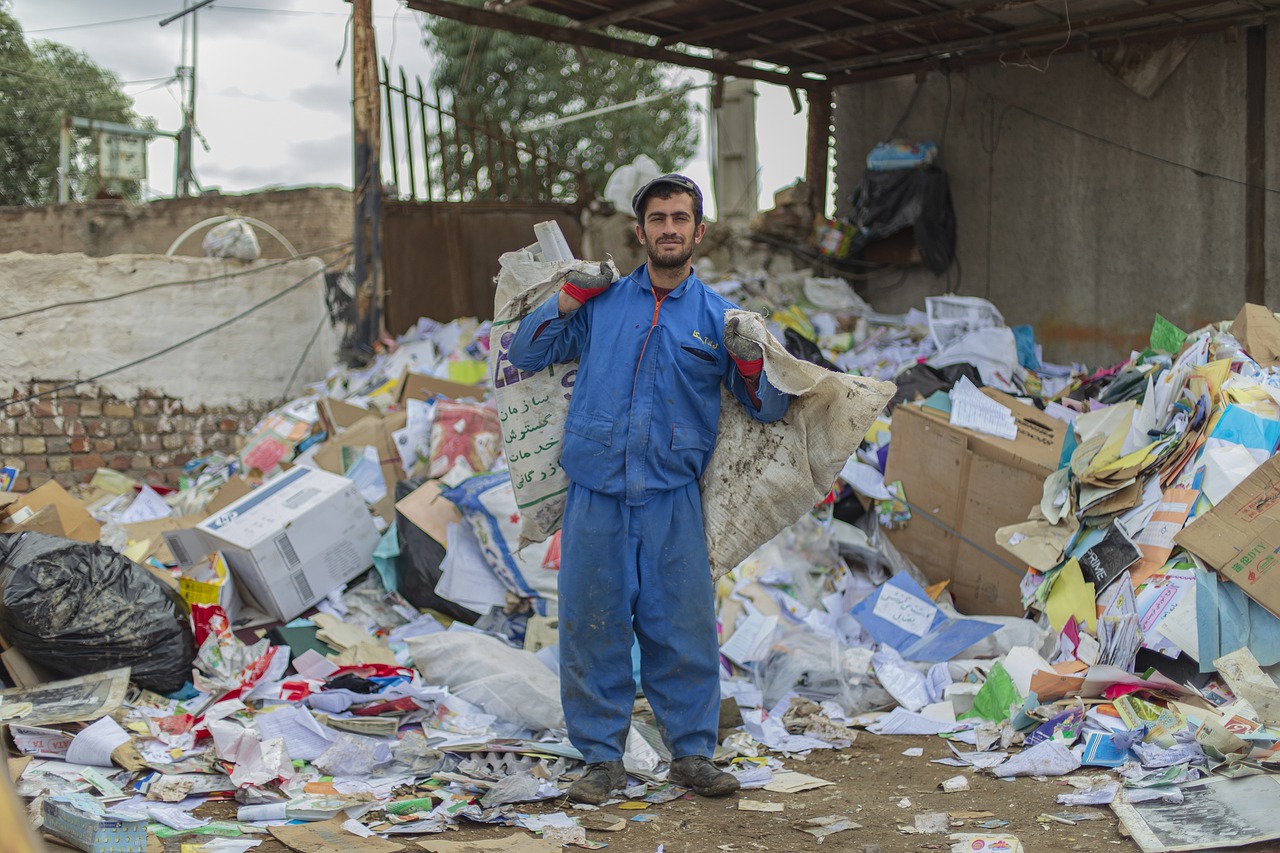
Environmental Impact
The environmental impact of waste-to-energy (WtE) facilities is a hot topic in today's discussions about sustainable waste management. As we grapple with the overwhelming amounts of waste generated daily, WtE technologies offer a glimmer of hope. By converting waste into energy, these facilities not only help reduce the volume of waste that ends up in landfills but also contribute to energy generation. This dual benefit is crucial in our quest for a more sustainable future.
One of the most significant environmental advantages of WtE is its ability to mitigate pollution. Traditional waste disposal methods, such as landfilling and incineration without energy recovery, often lead to harmful emissions that can contaminate air and soil. In contrast, modern WtE technologies are designed to capture and treat emissions, significantly reducing the release of harmful pollutants. For instance, advanced filtration systems and scrubbers can lower the levels of dioxins, furans, and particulate matter, which are notorious for their negative health impacts.
Moreover, the reduction of the carbon footprint associated with waste disposal processes is another crucial aspect of WtE. By converting waste into energy, we can displace the need for fossil fuels, which are major contributors to greenhouse gas emissions. According to studies, WtE facilities can reduce greenhouse gas emissions by up to 90% compared to landfilling. This is particularly important as the world strives to meet climate targets and transition to cleaner energy sources.
In addition to reducing emissions, WtE facilities play a vital role in resource recovery. They can extract valuable materials from waste, such as metals and ash, which can be repurposed or recycled. This not only minimizes the need for virgin resources but also promotes a circular economy where materials are reused, thus conserving natural resources and reducing environmental degradation.
| Environmental Benefits | Impact |
|---|---|
| Pollution Mitigation | Reduces harmful emissions compared to traditional waste management methods. |
| Greenhouse Gas Reduction | Can lower emissions by up to 90% compared to landfilling. |
| Resource Recovery | Extracts valuable materials, promoting recycling and reducing resource extraction. |
In conclusion, the environmental impact of waste-to-energy technologies is profound. By addressing pollution, reducing greenhouse gas emissions, and promoting resource recovery, WtE facilities stand as a beacon of hope in the ongoing struggle against waste and environmental degradation. However, it is essential to continue improving these technologies and addressing public concerns to maximize their potential and ensure a sustainable future for our planet.
- What is waste-to-energy technology? Waste-to-energy technology refers to the process of converting non-recyclable waste materials into usable forms of energy, including electricity, heat, or fuel.
- How does waste-to-energy benefit the environment? Waste-to-energy reduces landfill usage, lowers greenhouse gas emissions, and recovers valuable materials, contributing to a more sustainable waste management approach.
- Are there any health risks associated with waste-to-energy facilities? While there can be concerns regarding emissions, modern WtE facilities employ advanced technologies to minimize harmful pollutants, thus improving air quality compared to traditional waste disposal methods.
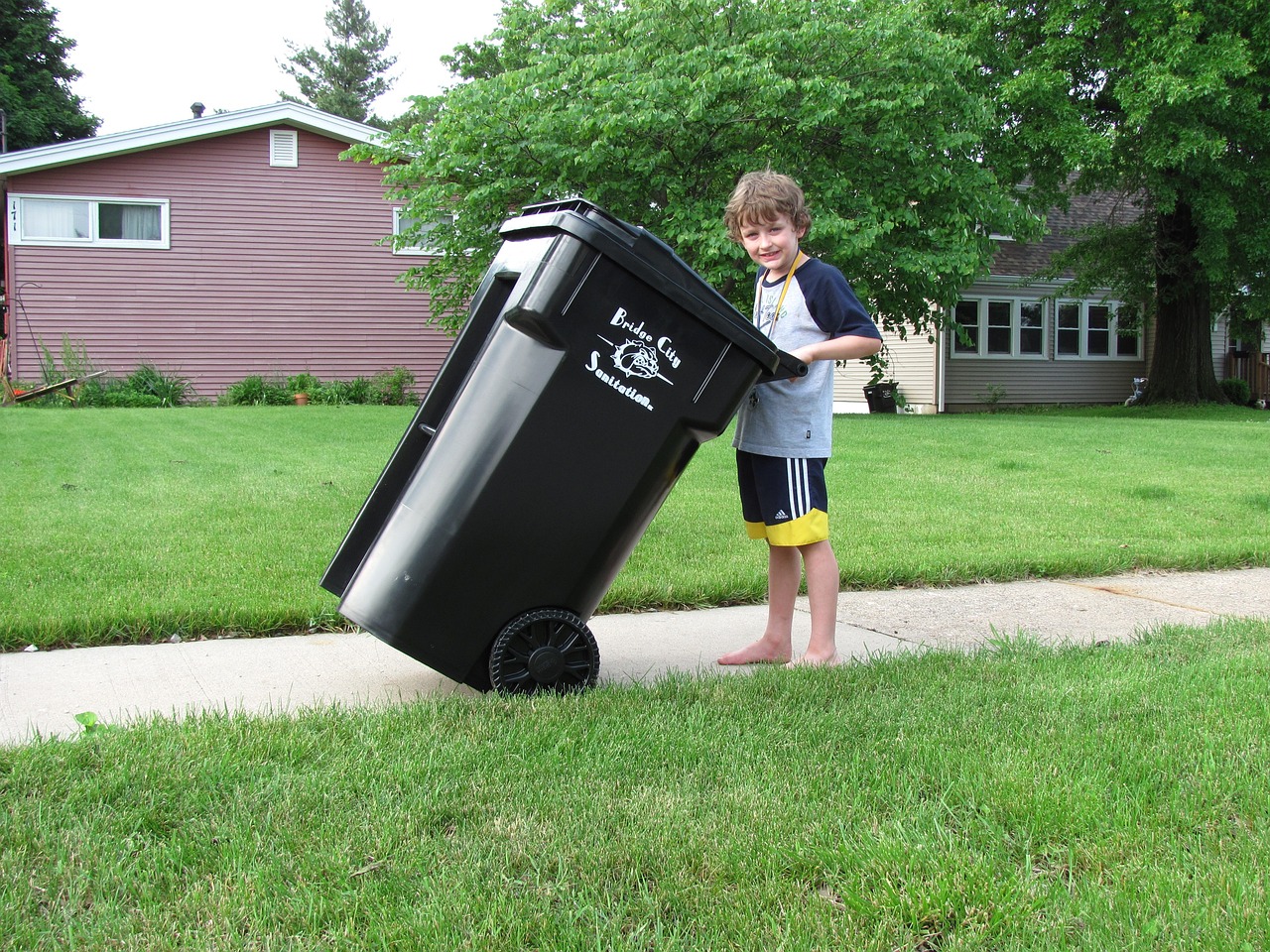
Air Quality Improvements
When we talk about waste management, one of the most pressing concerns is air quality. Traditional waste disposal methods, such as landfilling and open burning, can release a cocktail of harmful pollutants into the atmosphere. This is where waste-to-energy (WtE) technologies come into play, offering a cleaner alternative that not only reduces the volume of waste but also minimizes air pollution. By converting waste into energy through processes like incineration, gasification, or anaerobic digestion, WtE facilities can significantly lower the emissions of harmful substances compared to conventional methods.
For instance, WtE plants are designed with advanced filtration and scrubbing systems that capture particulate matter and toxic gases before they can escape into the environment. This means that the air released from these facilities is often much cleaner than that produced by landfills. According to studies, WtE facilities can reduce emissions of nitrogen oxides (NOx) and sulfur dioxide (SO2) by up to 90% compared to traditional waste disposal methods. This reduction plays a crucial role in improving local air quality, which can lead to better health outcomes for the community.
Moreover, the energy generated from waste can replace fossil fuels, further decreasing air pollution. Imagine turning trash into power that not only lights up homes but also contributes to cleaner air! This shift is akin to replacing a rusty old bicycle with a sleek electric scooter—suddenly, the ride becomes smoother and more efficient, benefiting both the rider and the environment.
However, it’s essential to acknowledge that the implementation of WtE technologies must be accompanied by strict regulatory oversight. Without proper regulations, there is a risk that some facilities might cut corners, leading to potential air quality issues. Therefore, it is vital for governments and local authorities to establish robust guidelines that ensure these facilities operate within safe emission limits.
In conclusion, WtE technologies present a promising solution for improving air quality while managing waste effectively. By investing in these systems, we can turn the tide against pollution and create a healthier environment for future generations. The potential for cleaner air is not just a dream; it’s a tangible goal within our reach.
- What is waste-to-energy technology?
Waste-to-energy technology refers to the processes that convert waste materials into usable energy, such as electricity, heat, or fuel, thereby reducing the amount of waste that ends up in landfills.
- How does waste-to-energy improve air quality?
Waste-to-energy facilities utilize advanced filtration systems to significantly reduce harmful emissions, such as nitrogen oxides and sulfur dioxide, leading to improved air quality compared to traditional waste disposal methods.
- Are waste-to-energy facilities safe?
When operated under strict regulations, waste-to-energy facilities can be safe and effective in minimizing environmental impact, including air pollution.

Resource Recovery
Resource recovery is a pivotal aspect of waste-to-energy (WtE) technologies, transforming waste from a mere disposal problem into a valuable resource. By harnessing the energy embedded in waste, these systems not only produce energy but also recover materials that can be recycled or reused. Imagine your garbage bin not just being a source of waste, but a treasure chest filled with materials waiting to be reimagined and repurposed!
In the waste-to-energy process, various materials can be extracted during the conversion of waste into energy. This includes metals, plastics, and even organic materials that can be composted or converted into biofuels. The recovery of these resources contributes to a circular economy, where materials are kept in use for as long as possible, thereby minimizing the need for virgin resources. This is not just beneficial for the environment; it also makes economic sense. By recovering valuable materials, businesses can reduce costs associated with raw material procurement and waste disposal.
Furthermore, resource recovery aligns perfectly with global sustainability goals. By diverting waste from landfills, we are not only conserving space but also reducing the harmful emissions associated with waste decomposition. The table below illustrates the typical materials recovered through waste-to-energy processes:
| Material Type | Recovery Method | Potential Uses |
|---|---|---|
| Metals | Magnetic separation | Recycling into new products |
| Plastics | Mechanical sorting | Manufacturing new plastic items |
| Organic Waste | Composting or anaerobic digestion | Fertilizers or biofuels |
Moreover, the recovery of resources doesn't just stop at physical materials. The energy produced from waste can be harnessed in various forms, including electricity, heat, or even as a substitute for fossil fuels. This diversification in energy production not only enhances energy security but also reduces dependency on non-renewable energy sources.
In conclusion, resource recovery within waste-to-energy systems is a game changer. It allows us to view waste through a different lens—one that recognizes its potential as a resource rather than a burden. By investing in these technologies, we are not only addressing the waste crisis but also paving the way for a sustainable future where resources are utilized efficiently and responsibly. So next time you think about waste, remember that it might just be a stepping stone towards a greener planet!
- What is resource recovery? Resource recovery refers to the process of extracting valuable materials and energy from waste, reducing the need for landfill disposal.
- How does waste-to-energy contribute to resource recovery? Waste-to-energy technologies convert waste into energy while also recovering recyclable materials, promoting a circular economy.
- What types of materials can be recovered? Common materials include metals, plastics, and organic waste, all of which can be recycled or repurposed.
- What are the environmental benefits of resource recovery? Resource recovery helps reduce landfill usage, lowers greenhouse gas emissions, and conserves natural resources.
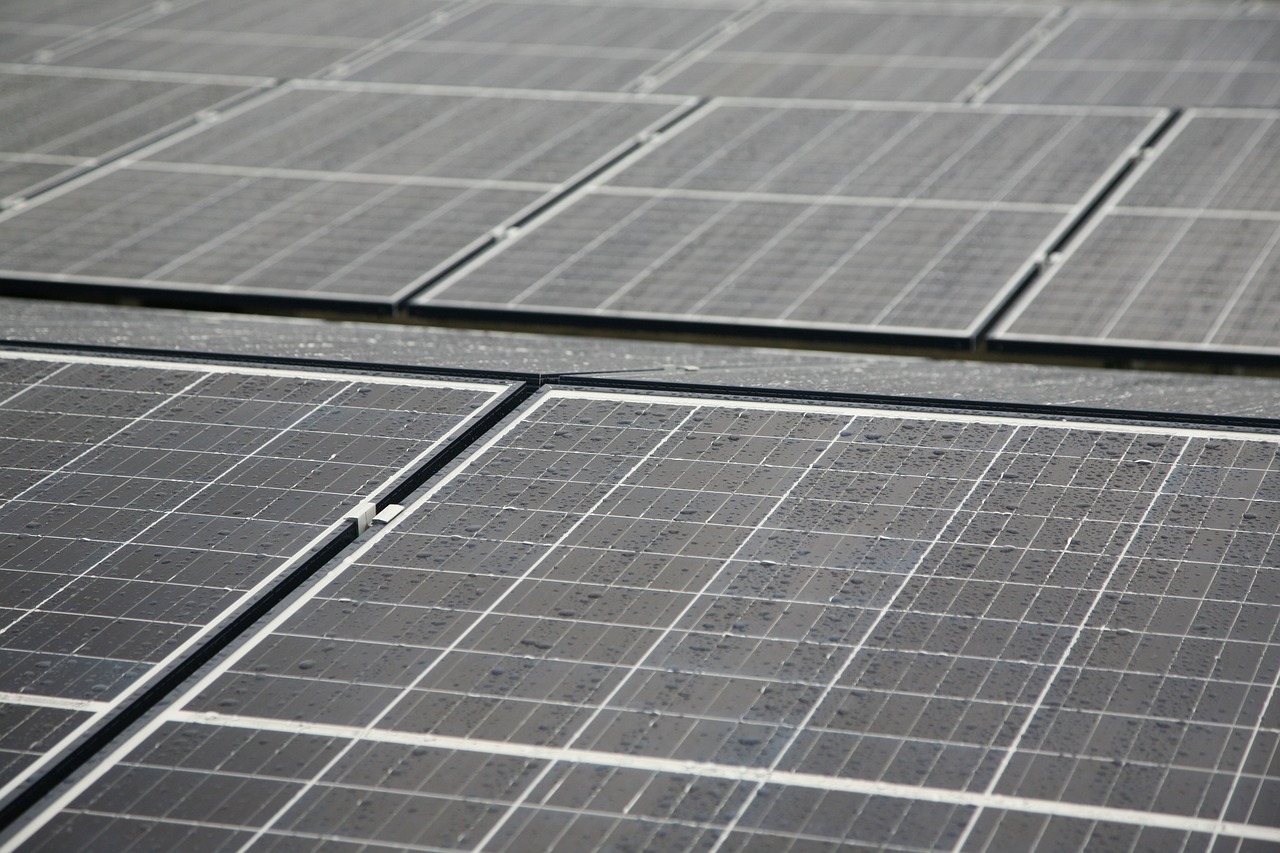
Economic Considerations
When we talk about waste-to-energy systems, we're not just diving into environmental benefits; we’re also stepping into the realm of economics. The implementation of these technologies can significantly impact local and national economies. For starters, waste-to-energy facilities can create a plethora of job opportunities. From construction to operation and maintenance, these facilities require a skilled workforce. In fact, a study has shown that for every megawatt of energy produced, approximately 1.5 jobs are created. That's not just a number; it's a chance for communities to thrive and grow.
Moreover, waste-to-energy systems can lead to substantial cost savings for municipalities. Traditional waste disposal methods, like landfilling, often come with rising costs due to land acquisition, maintenance, and environmental compliance. In contrast, waste-to-energy facilities can reduce these expenses by converting waste into a valuable resource. For example, the energy generated can offset local energy costs, providing a dual benefit of waste management and energy production.
But it doesn't stop there! These facilities can also contribute to energy independence. As countries strive to reduce their reliance on fossil fuels, waste-to-energy presents a viable alternative. By harnessing the energy from waste, nations can decrease their dependence on imported fuels, thus enhancing their energy security. This shift not only supports local economies but also promotes a more sustainable energy future.
To illustrate the economic impact further, consider the following table that summarizes the potential benefits of waste-to-energy systems:
| Economic Benefit | Description |
|---|---|
| Job Creation | Generates employment opportunities in various sectors. |
| Cost Savings | Reduces landfill costs and offsets energy expenses. |
| Energy Independence | Decreases reliance on imported fossil fuels. |
| Resource Recovery | Recovers valuable materials, reducing the need for virgin resources. |
However, it’s essential to approach this economic analysis with a balanced perspective. While the benefits are significant, the initial investment for waste-to-energy facilities can be daunting. Funding, financing, and long-term sustainability plans are crucial to ensure these projects are economically viable. Community involvement and transparent communication about the benefits and challenges can foster public support, which is essential for the successful implementation of waste-to-energy systems.
In conclusion, the economic considerations surrounding waste-to-energy technologies are multifaceted. They present not only a solution to the waste crisis but also an opportunity for economic growth, job creation, and energy independence. As we continue to explore and innovate in this field, it’s vital to keep these economic factors in mind, ensuring that we pave the way for a sustainable future.
- What is waste-to-energy technology? Waste-to-energy technology involves converting waste materials into usable energy, such as electricity, heat, or fuel.
- How does waste-to-energy benefit the economy? It creates jobs, reduces waste management costs, and promotes energy independence.
- Are there any environmental concerns with waste-to-energy? While there are concerns, modern waste-to-energy facilities are designed to minimize emissions and improve air quality.
- What role does public perception play in waste-to-energy projects? Public support is crucial for the success of waste-to-energy projects, as community engagement can address misconceptions and foster acceptance.

Challenges in Implementation
Implementing waste-to-energy (WtE) technologies comes with its own set of challenges that can significantly affect their acceptance and operational success. Despite the clear benefits these systems offer, several barriers can impede their development. One of the primary challenges is public opposition. Many communities harbor misconceptions about waste-to-energy facilities, often associating them with increased pollution and health risks. This fear can lead to strong resistance against proposed projects, making it essential for stakeholders to engage with the community, providing transparent information and addressing concerns directly.
Another significant hurdle is the technological limitations of existing waste-to-energy systems. While advancements have been made, not all facilities are equipped to handle diverse types of waste efficiently. This limitation can lead to operational inefficiencies and increased costs, ultimately affecting the sustainability of the project. Additionally, the initial capital required for setting up a waste-to-energy plant can be daunting. The high upfront costs often deter investors, especially in regions where waste management budgets are already stretched thin.
Moreover, the regulatory framework surrounding waste-to-energy technologies can be complex and inconsistent. Different regions may have varying regulations that can complicate the approval process for new facilities. This inconsistency can create uncertainty for investors and operators alike, leading to delays in project timelines. As regulations evolve, keeping pace with compliance requirements can become a full-time job, further straining resources.
To better understand the challenges faced in the implementation of waste-to-energy technologies, here’s a brief overview:
| Challenge | Description |
|---|---|
| Public Opposition | Fear of pollution and health risks leads to community resistance. |
| Technological Limitations | Inability to efficiently process diverse waste types can hinder operations. |
| Regulatory Framework | Inconsistent regulations create uncertainty and complicate project approval. |
Additionally, financial constraints play a crucial role in the viability of waste-to-energy projects. Securing funding can be particularly challenging in regions where government support is lacking or where the economic environment is unstable. Investors often seek assurance that their investments will yield returns, and the long payback periods associated with waste-to-energy plants can deter potential backers.
In conclusion, while waste-to-energy systems hold great promise for transforming waste into a valuable resource, overcoming these challenges requires a concerted effort from all stakeholders. Public education and engagement, technological innovation, supportive regulatory frameworks, and financial incentives are all vital components in fostering a more favorable environment for waste-to-energy implementation. By addressing these challenges head-on, we can pave the way for a more sustainable waste management future.
- What is waste-to-energy technology? Waste-to-energy technology involves converting waste materials into usable energy, such as electricity, heat, or fuel, through various processes.
- How does waste-to-energy help the environment? It reduces landfill usage, lowers greenhouse gas emissions, and promotes resource recovery, contributing to a more sustainable waste management approach.
- What are the main challenges of implementing waste-to-energy systems? Key challenges include public opposition, technological limitations, regulatory hurdles, and financial constraints.
- Can waste-to-energy facilities improve air quality? Yes, when operated correctly, waste-to-energy facilities can reduce harmful emissions compared to traditional waste management methods, thus improving air quality.
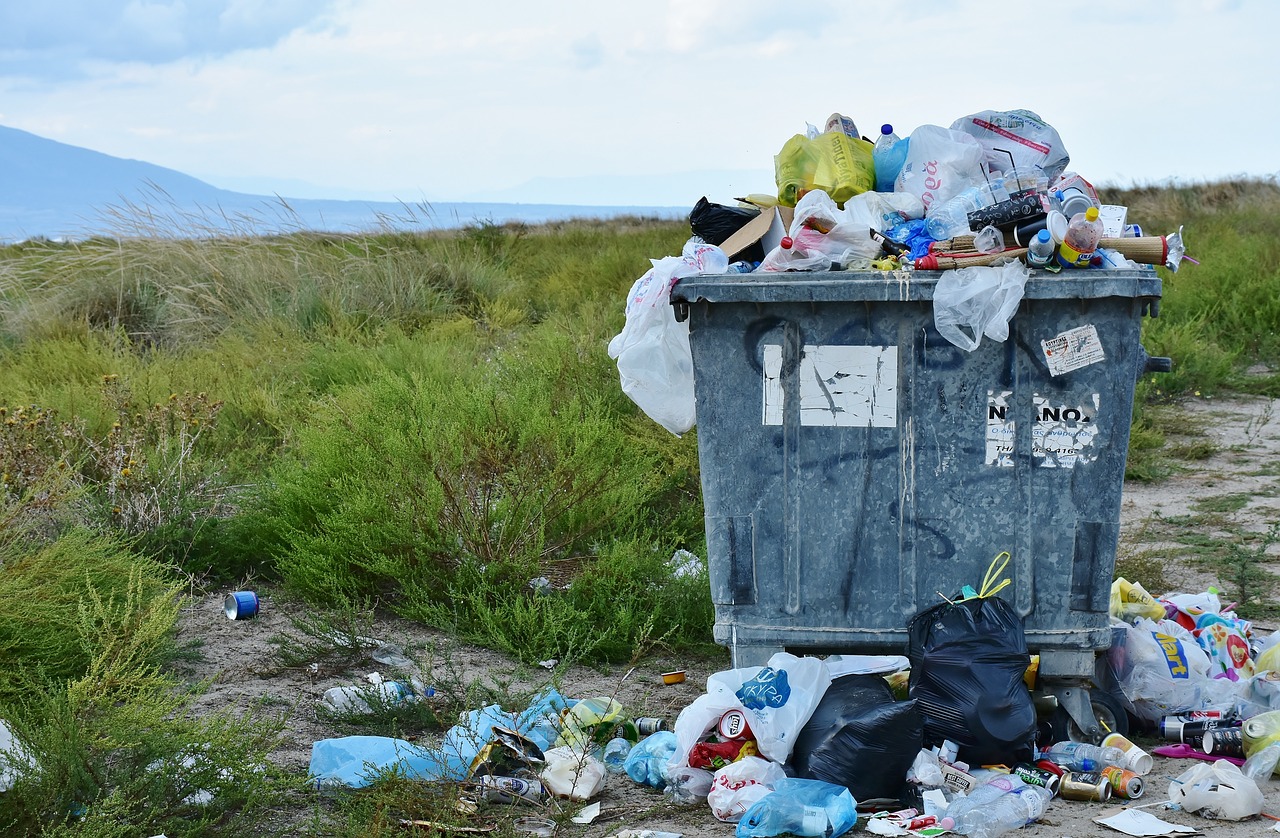
Public Perception
When it comes to waste-to-energy (WtE) facilities, public perception plays a pivotal role in shaping their success or failure. Many communities are often skeptical about the implementation of these technologies, primarily due to misconceptions and fears surrounding environmental impacts. It's not uncommon for people to associate waste-to-energy with pollution or health risks, stemming from a lack of understanding about how modern facilities operate. In reality, advancements in technology have significantly improved the efficiency and safety of these systems, making them a viable solution for waste management.
One of the most prevalent misconceptions is that waste-to-energy plants are simply 'incinerators' that burn waste without regard for the environment. However, the truth is that contemporary WtE facilities employ sophisticated methods to convert waste into energy while minimizing emissions. They utilize advanced filtration systems and scrubbers to clean exhaust gases, ensuring that harmful pollutants are significantly reduced. This is where community engagement becomes crucial. By providing clear, transparent information about the processes involved and the benefits of WtE, stakeholders can help dispel myths and build public trust.
Community engagement can take many forms, from public forums and informational sessions to school programs and outreach initiatives. These efforts allow residents to voice their concerns, ask questions, and gain a better understanding of the technology. When people feel included in the conversation, they are more likely to support projects that benefit their community. For example, a well-informed public may recognize that WtE facilities can contribute to energy independence, reduce landfill usage, and even create local jobs. This understanding can foster a sense of ownership and pride in sustainable practices.
Moreover, it's essential to highlight the benefits of waste-to-energy systems in terms of public health and environmental sustainability. By diverting waste from landfills, WtE facilities not only reduce the volume of waste but also help mitigate the methane emissions associated with decomposing organic matter. This is especially important as we confront the reality of climate change and its far-reaching consequences. When communities understand that WtE can lead to cleaner air and a healthier environment, they may be more inclined to support the development of such facilities.
In conclusion, addressing public perception is a multifaceted challenge that requires ongoing dialogue, education, and transparency. As we move forward in the quest for sustainable waste management solutions, it is imperative to engage communities, clarify misconceptions, and showcase the tangible benefits that waste-to-energy technologies can offer. Only through collective understanding and support can we harness the full potential of WtE systems and pave the way for a cleaner, greener future.
- What is waste-to-energy technology? Waste-to-energy technology refers to processes that convert non-recyclable waste materials into usable forms of energy, such as electricity, heat, or fuel.
- How does waste-to-energy benefit the environment? Waste-to-energy reduces the volume of waste sent to landfills, lowers greenhouse gas emissions, and recovers valuable resources, contributing to a more sustainable waste management system.
- Are waste-to-energy facilities safe for communities? Yes, modern waste-to-energy facilities are equipped with advanced technologies that minimize emissions and ensure compliance with environmental regulations, making them safe for surrounding communities.
- Can waste-to-energy help with energy independence? Absolutely! By converting waste into energy, communities can reduce their reliance on fossil fuels and enhance their energy security.

Regulatory Framework
The regulatory framework surrounding waste-to-energy technologies plays a crucial role in their development and implementation. As these systems aim to transform waste into valuable energy, they must navigate a complex landscape of laws and regulations that vary from one region to another. This framework is essential not only for ensuring environmental protection but also for fostering public trust and encouraging investment in waste-to-energy projects.
At the heart of the regulatory landscape are policies that govern emissions, waste management, and energy production. These regulations are designed to mitigate the potential negative impacts of waste-to-energy facilities, such as air and water pollution. For instance, many countries have established strict emission standards that waste-to-energy plants must meet to operate legally. These standards often include limits on pollutants like dioxins, nitrogen oxides, and particulate matter, ensuring that the facilities do not compromise air quality.
Moreover, the regulatory framework often includes incentives for adopting waste-to-energy technologies. Governments may provide financial incentives such as tax breaks, grants, or subsidies to encourage investment in these systems. This support is vital, especially in the initial stages of project development, where capital costs can be significant. By creating a favorable regulatory environment, authorities can stimulate innovation and facilitate the growth of the waste-to-energy sector.
However, navigating this regulatory maze can be challenging for developers. Each locality may have its own set of regulations, which can lead to inconsistencies and confusion. For example, some regions may prioritize renewable energy production and offer streamlined permitting processes, while others may impose stringent environmental assessments that can delay project timelines. Therefore, it is essential for stakeholders to engage with local governments and regulatory bodies early in the project planning phase to understand the requirements and expectations.
Additionally, community engagement is a critical aspect of the regulatory framework. Public perception can significantly influence the success of waste-to-energy projects. Therefore, it is imperative for developers to communicate transparently with local communities about the benefits and safety measures associated with waste-to-energy facilities. This includes providing information on how emissions will be controlled, what types of waste will be processed, and the overall impact on local infrastructure and public health.
In summary, a robust regulatory framework is essential for the successful implementation of waste-to-energy technologies. It must balance environmental protection with the need for sustainable energy solutions, while also addressing public concerns and promoting economic viability. By fostering collaboration between governments, industry stakeholders, and communities, we can pave the way for a more sustainable waste management future.
- What is waste-to-energy technology? Waste-to-energy technology refers to processes that convert non-recyclable waste materials into usable forms of energy, such as electricity, heat, or fuel.
- How does waste-to-energy benefit the environment? Waste-to-energy reduces landfill usage, lowers greenhouse gas emissions, and helps recover valuable materials, contributing to a more sustainable waste management approach.
- What are the main challenges facing waste-to-energy projects? Challenges include public opposition, regulatory hurdles, and technological limitations that can hinder the development and adoption of these systems.
- How can communities engage with waste-to-energy projects? Communities can engage by participating in public meetings, voicing concerns, and seeking information from project developers to understand the benefits and safety measures involved.
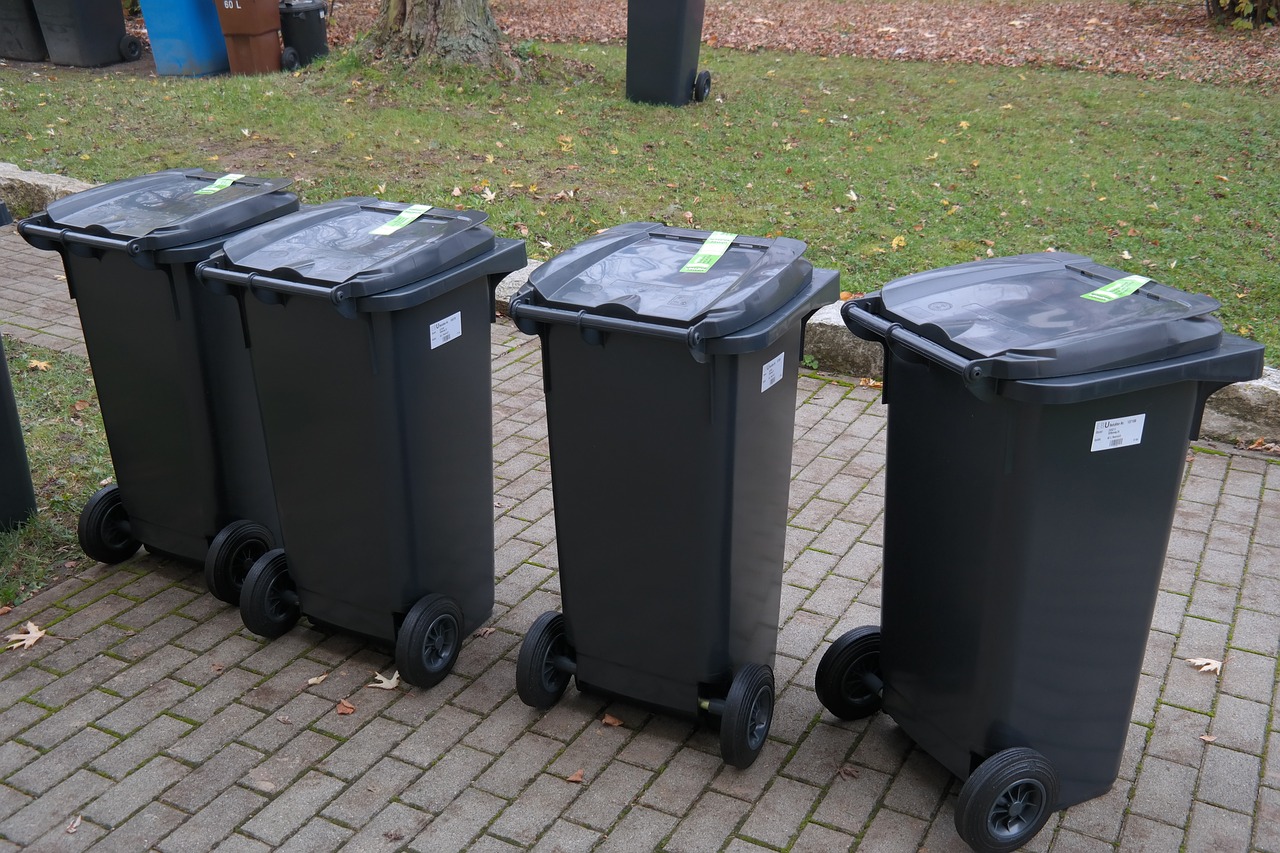
Future of Waste-to-Energy
As we gaze into the horizon of waste management, the future of waste-to-energy (WtE) technologies shines brightly with promise and potential. With the world grappling with escalating waste generation and the urgent need for sustainable solutions, WtE stands at the forefront of innovation. Imagine transforming what we deem as trash into a valuable resource—this is not just a dream but an emerging reality. The future of WtE is not only about energy production; it’s about creating a sustainable ecosystem where waste is minimized, resources are recovered, and energy is generated efficiently.
Advancements in technology are propelling waste-to-energy systems into a new era. Enhanced processes, such as anaerobic digestion and advanced thermal conversion, are becoming more efficient, allowing for higher energy yields from the same amount of waste. These innovations are akin to upgrading from a flip phone to a smartphone; the capabilities expand exponentially, enabling us to tackle waste in smarter ways. With the integration of artificial intelligence and machine learning, WtE facilities can optimize operations, predict maintenance needs, and improve overall efficiency. This technological leap not only enhances productivity but also reduces operational costs, making WtE more appealing to investors and governments alike.
Furthermore, the global shift towards a circular economy is creating fertile ground for the expansion of waste-to-energy projects. As society increasingly recognizes the value of reusing and recycling materials, WtE plays a crucial role in closing the loop. By recovering energy from waste, we reduce reliance on fossil fuels and promote a sustainable energy future. The synergy between WtE and circular economy principles is powerful; it fosters a mindset where waste is not an end, but a resource for new beginnings. In this context, the future looks like a well-oiled machine, where every piece of waste contributes to a cleaner planet and a robust economy.
However, the road ahead is not without its challenges. As WtE technologies evolve, so too must the regulatory frameworks that govern them. Policymakers need to adapt to these changes, creating supportive environments that encourage investment and innovation. This includes streamlining permitting processes, providing financial incentives, and ensuring that regulations keep pace with technological advancements. A collaborative approach involving governments, industry stakeholders, and communities will be essential to foster acceptance and drive the growth of WtE solutions.
In conclusion, the future of waste-to-energy is not just about energy production; it’s a holistic approach to waste management that embraces sustainability, innovation, and community engagement. As we move forward, the potential for WtE technologies to significantly impact our waste management systems and contribute to a greener, more sustainable future is immense. The question now is not whether we can afford to invest in waste-to-energy but rather, can we afford not to?
- What is waste-to-energy technology?
Waste-to-energy technology involves converting non-recyclable waste materials into usable forms of energy, such as electricity, heat, or fuel. - How does waste-to-energy benefit the environment?
WtE reduces landfill use, lowers greenhouse gas emissions, and promotes resource recovery, contributing to a more sustainable waste management approach. - Are there any health concerns associated with waste-to-energy facilities?
While there can be concerns, modern WtE facilities are designed with advanced emission control technologies that significantly reduce harmful pollutants, improving overall air quality. - What are the economic benefits of waste-to-energy?
WtE can create jobs, reduce waste disposal costs, and contribute to energy independence by providing a local source of energy. - What challenges does the waste-to-energy sector face?
Challenges include public perception, regulatory hurdles, and technological limitations that can hinder the development and adoption of WtE projects.
Frequently Asked Questions
-
What is waste-to-energy technology?
Waste-to-energy technology involves converting non-recyclable waste materials into usable forms of energy, such as electricity, heat, or fuel. This process not only helps in reducing the volume of waste sent to landfills but also generates energy that can be utilized in various applications.
-
What are the benefits of waste-to-energy systems?
Waste-to-energy systems offer numerous benefits, including decreased landfill usage, production of renewable energy, and lower greenhouse gas emissions. By transforming waste into energy, these systems contribute to a more sustainable waste management approach and help mitigate the global waste crisis.
-
How does waste-to-energy impact the environment?
Waste-to-energy technology can significantly improve environmental conditions by reducing pollution and the carbon footprint associated with waste disposal. These facilities can also recover valuable materials from waste, promoting a circular economy and reducing reliance on virgin resources.
-
Can waste-to-energy facilities improve air quality?
Yes! Waste-to-energy facilities can enhance air quality by minimizing harmful emissions compared to traditional waste management methods. This improvement not only benefits the environment but also supports public health by reducing the prevalence of air pollutants.
-
What economic advantages do waste-to-energy projects provide?
Implementing waste-to-energy systems can lead to job creation, cost savings in waste management, and contribute to energy independence. These projects can stimulate local economies and provide a sustainable energy source, making them economically attractive.
-
What challenges do waste-to-energy projects face?
Waste-to-energy projects often encounter challenges such as public opposition, technological limitations, and regulatory hurdles. Addressing these challenges is crucial for the successful development and acceptance of waste-to-energy technologies.
-
How can public perception affect waste-to-energy facilities?
Public perception plays a significant role in the acceptance of waste-to-energy facilities. Common misconceptions about pollution and health risks can lead to opposition. Engaging with the community and providing accurate information is essential to foster acceptance and support for these projects.
-
What is the regulatory landscape for waste-to-energy technologies?
The regulatory framework surrounding waste-to-energy technologies varies by region. Supportive policies and regulations are necessary to encourage investment and innovation in this sector, ensuring that waste-to-energy projects can be developed effectively and sustainably.
-
What is the future of waste-to-energy technology?
The future of waste-to-energy technologies looks promising, with advancements in technology and potential growth areas. As societies strive for sustainable waste management solutions, waste-to-energy systems are likely to play a crucial role in addressing the challenges of waste disposal and energy production.



















